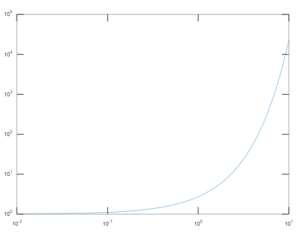

smallest, for a given probability) would probably be such thatį'(x1) = F'(x2), F(x2) - F(x1) = desired_probability, and x1 <= mode <= x2.

contourf (log (Data (:,:)),log (Contours. Also be sure to take the log of your defined contours so they show up in the right spot. For the plot here, I used: Contours 1 3 10 30 1 2) Plot your Data Using imagesc, contourf, or some other function, plot the log of your data.


In that case, it is probably more correct to use bounds that are not mean +/- K * std_deviation to indicate bounds.Īssuming a unimodal distribution with cdf F(x), the "proper" bounds (i.e. 1) Define Your Contours Define where you'd like contours. In this case, where some logarithm is taken of a quantity, it is likely that the quantity is drawn from a non-negative distribution. x% of the time, the value is between the indicated bounds). Normally error bars tend to indicate some measure of confidence / probability (e.g. There are various syntaxes that are used to plot the numbers based on their nature whether it is a real or complex number. One should probably think about why have error bars. In Matlab, we use a log plot to plot the graphs in logarithmic scales in both horizontal and vertical axes. To plot multiple sets of coordinates on the same set of axes, specify at least one of X or Y as a matrix. To plot a set of coordinates connected by line segments, specify X and Y as vectors of the same length. If you do not want both axes to be log scale, use semilogx or semilogy. use 10*log10(max(K, x-2*std_x)) instead.ĮDIT to summarize comments and further thoughts: loglog (X,Y) plots x - and y -coordinates using a base-10 logarithmic scale on the x -axis and the y -axis. The example from the Mathworks website: x logspace (-1,2) generate a sequence of points equally spaced logarithmically loglog (x,exp (x),'-s') grid on. K = min(x) / 1e4 % so that K is 40 db below the smallest x
MATLAB LOG PLOT HOW TO
In a different post, I explain how to freeze colors for different colormaps on the same figure.You can replace those values with a small value but log-able (say, 40 dB lower): Incorrect: colorbar('YTick',log(Contours),'YTickLabel',Contours,'FontSize',12) Use: colorbar('YTick',log(Contours),'YTickLabel',Contours) Ĭaxis(log()) Ĥ) Make sure the last thing you do is set the Ticks! I've noticed if you have any other commands after this in the colorbar command, it reverts back to something funky.Įxample: Correct: colorbar('FontSize',12,'YTick',log(Contours),'YTickLabel',Contours)
MATLAB LOG PLOT CODE
matlab is a high performance language for technical computing the name matlab stands m files files that contain code in matlab language are called m files you create a m file using a text editor and then use them as you would any other matlab function or, matlab code for dp i why is this. When you make a new figure it defaults to a plain plot() style graph which then gets locked with the hold on command. contourf(log(Data(:,:)),log(Contours)) ģ) Define the tick marks on your colorbar The last step is to make the colorbar show the correct data. the matlab command bode to plot the log magnitude. For the plot here, I used: Contours= Ģ) Plot your Data Using imagesc, contourf, or some other function, plot the log of your data. A quick google search on how to make logarithmic contour plots and logarithmic color-bars yielded some unhelpful results, so I thought I'd give a quick post here.ġ) Define Your Contours Define where you'd like contours. The common logarithm function in MATLAB is log10. Log Plots in MATLAB Plot One Line Plot Multiple Lines Specify Axis Labels and Tick Values Plot Points as Markers Without Lines Add a Legend Specify y. A lot of my data ranges orders of magnitude, and can be very hard to depict using standard MATLAB functions like imagesc, contourf, contour, etc. In the above formula, log ) is the common logarithm (base 10 logarithm).


 0 kommentar(er)
0 kommentar(er)
